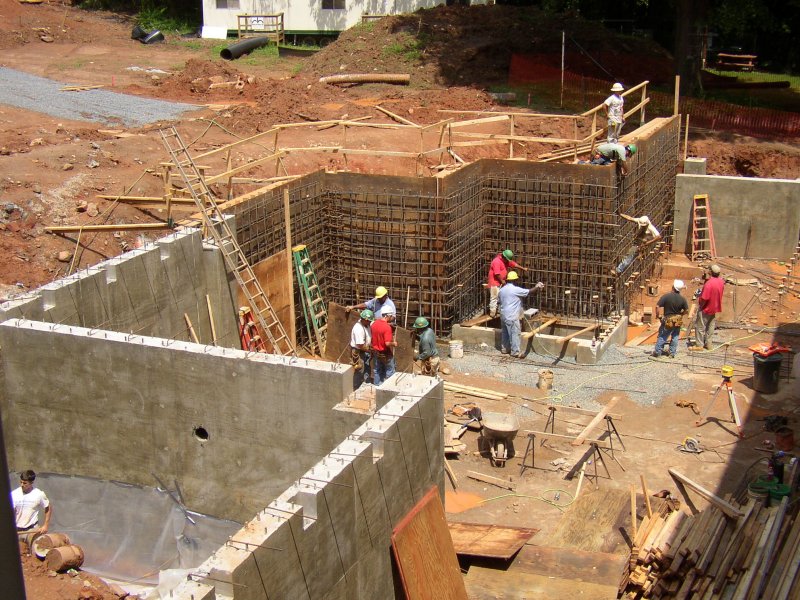Now this might sound down right silly, but many homeowners and even contractors actually treat the basement almost as if it wasn’t really part of the house. You might be saying “well that’s just silly!” and you would be right. The basement is the space created under your home by the walls of your foundation. Since it’s a closed in space, it is very much a part of your home and regularly contributes to the air quality and health of the rest of the home.
Foundation is sick, home is sick.
Movements in the soils around the foundation make the walls move, bricks buckle, or cause cracks in the basement walls. These movements also affect the home directly on top of it by causing ceiling and wall cracks, doors to stick and windows to get shifty. It’s not only connected in a physical way, but is also connected with airflow.
Air from the outside of the home finds its way into the basement through the foundation walls. The air travels up and into the first floor of the home and continues to travel until it reaches a window, roof or some other opening. If the air quality in the basement is poor, than the air quality in the rest of the home is affected and changed. Mold spores, pollutants or other VOCs that have access to your basement have access to the rest of the home.
The recent epidemic of sick-house syndrome is typically caused by problems emanating from the basement. Mold and mildew can quickly turn a home from a safe haven into a place that makes it hard to breathe and can even cause neurological disorders. Leaving the home’s foundation to it’s own devices will only allow further deterioration, cracks, moisture, and problems to occur.
Like any part of your home…
…the foundation needs to be repaired and maintained. Creating a healthy and safe environment will lend itself to creating a healthy and safe home.
Leaving problems like standing water, cracks, or mold to fix themselves will only leave you in solid disappointment.
As you would have a plumber come and tend to your pipes, have a basement health contractor come and inspect the condition of your basement. Providing a Radon Test every 2 years, correcting and foundation stability issues, and attending to moisture and water control needs will have you finally sitting pretty.
Evidence that Contractors think differently about the basement.
I was even surprised to see that many contractors (who aren’t in the basement health industry) see the basement as separate from the rest of the home. Many finishing contractors will build with the same materials as they would on a 1st or 2nd floor project. Organic material such as wood and standard dry walls can turn into hazards when met with moisture issues. This proves that many finishing contractors don’t understand the basement environment and think that the foundation is a separate part of the home.
Providing the same classical finishing methods and materials to a remodeling job in the basement shows that contractors don’t always understand the problems of their materials in the foundation area. Paper-backed dry walls and insulation can feed mold problems. Wood studs can absorb moisture and introduce mold and dry rot odors to the basement. The basement requires different types of materials to be used in the basement and by not understanding this; contractors condemn their remodeling projects to eventual disaster.
The foundation itself, yes, is a separate “piece” of the home, but the conditions within it are very much connected to the rest of the home. This is why thinking this way about the basement is one of the Top 6 Most Common Basement Mistakes.
11/03/2009
Subscribe to:
Comments (Atom)











